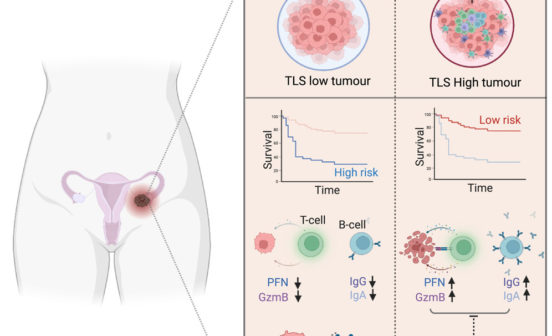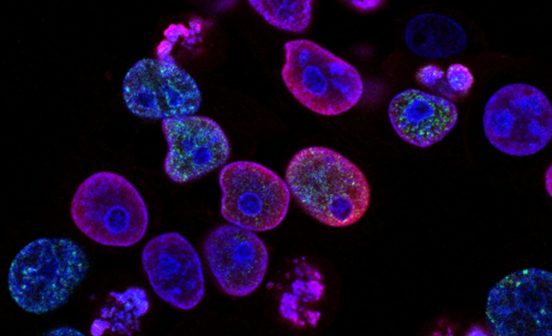Diagnostic Al-backed Virtual Biopsy to help doctors assess lung cancer

Imperial researchers have used artificial intelligence (AI) to extract information about the chemical makeup of lung tumours from medical scans. For the first time, they have demonstrated how combining medical imaging with AI can be used to provide a ‘virtual biopsy’ for cancer patients.
Their non-invasive method can classify the type of lung cancer a patient has – which is crucial in selecting the right treatment – and can predict if the cancer is likely to progress.
According to the researchers, the technique could be used by doctors when it’s not possible or suitable to obtain a physical tissue biopsy from a patient.
The study, published in the journal npj Precision Oncology, was led by Imperial College London, Imperial College Healthcare NHS Trust and funded by the National Institute for Health and Care Research (NIHR) Imperial Biomedical Research Centre (BRC), alongside collaborators in Córdoba, Spain.
The study’s senior author, Professor Eric Aboagye, from Imperial’s Department of Surgery and Cancer, who was also a co-Themelead for the previous NIHR Imperial BRC Imaging Theme, said: “At the moment, trying to find out in-depth information about tissues and tumours requires invasive biopsies, which can be uncomfortable for the patient, delay treatment decisions and be costly for health services. Although CT scans are commonly used in the clinic, they fail to offer detailed insights into the cellular type or prognostic information of diseases.”
First-author and Imperial PhD candidate Marc Boubnovski Martell adds: “We’ve developed a system that merges CT scans with the chemical makeup of tumours and normal lung tissue. This allows us to classify lung cancer types and, importantly, provides reliable predictions about patient outcomes.”
Early detection and diagnosis
Lung cancer is the most common cause of cancer death in the UK, with around 35,000 lives lost to the disease each year, according to Cancer Research UK. This is partly because symptoms don’t appear in the early stages and there is a pressing need for new ways to detect and treat the tumour before it spreads to other parts of the body.
Patients who present with symptoms of lung cancer tend to be diagnosed using chest X-rays and computed tomography (CT) scans – which can also show if the cancer has spread beyond the lungs.
If it’s safe to get a biopsy sample, clinical scientists then look at the tumour cells under a microscope and classify the type of lung cancer a patient has. This helps doctors decide which course of treatment might be best.
A relatively new test called metabolomic profiling, which also requires a tissue biopsy, can provide much more detailed information about tumour cell chemistry and metabolism and importantly how the cancer is likely to evolve. However, it is labour and time-intensive and so isn’t performed routinely in hospitals.
AI-powered imaging
In recent years, AI has been used to analyse medical scans and look for signs of disease that can be missed by doctors or might not even be visible to the naked eye. Generative AI, a type of AI that can learn from data to create new content, is currently being pursued for multiple applications.
The Imperial team took these ideas a step further and wondered if information about lung tumour chemistry contained in the metabolomic profile might show up in CT scans.
First though, any AI model needs to be trained on existing groups of patients who have a medical scan, a definitive diagnosis and preferably lots of additional clinical information. The researchers used data from 48 lung cancer patients who were treated at the University Hospital Reina Sofia (UHRS) in Córdoba, Spain. Uniquely, all the patients had a CT scan performed as well as detailed metabolomic profiling of their tumour tissue and healthy tissue next to the tumour.
Based on this data, the Imperial team developed an AI-powered, deep-learning assessment tool they call tissue-metabolomic-radiomic-CT (TMR-CT).
The researchers found a significant and powerful correlation between patients’ metabolomic profiles and ‘deep features’ of their CT scans, which appear as brighter or darker areas in the image.
Using this method, the researchers theorised they could bypass the need for physical tissue samples and infer tumour metabolic characteristics from the CT scan alone.
To test this, they used their TMR-CT model in a separate group of 723 lung cancer patients who were treated at Royal Marsden Hospital, Guy’s and St Thomas’ Hospital or Imperial College NHS Healthcare Trust. All patients had a CT scan but there was no available metabolomics data.
The results showed that TMR-CT adeptly classified lung cancer and, importantly, gave dependable predictions about patient outcomes, surpassing the performance of traditional CT-based methods and clinical assessments.
A future clinical tool
The researchers hope to confirm their TMR-CT method in other groups of lung cancer patients as well as potentially people with brain, ovarian and endometrial cancers, which can also be difficult to obtain biopsies from.
In the future, the technique could be incorporated as an algorithm as part of the software loaded onto commercial medical imaging scanners.
Professor Aboagye concludes: “This research shows the potential of using CT scans to gain a deeper, more nuanced understanding of tissue and tumour chemical composition, that has until now only been accessible through direct tissue sampling. This method could prove particularly beneficial in countries like the UK, where lung cancer prevalence is high, and potentially transform diagnostic and treatment protocols.”





